|
with Leigh Ann Yoder The Poetry of Shel Silverstein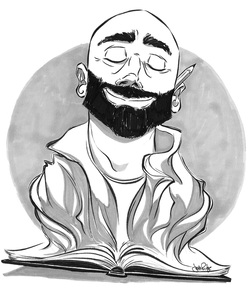 This week's unit centered around the poetry of Shel Silverstein. Shel is well known for his creative, imaginative and entertaining poetry which has filled the hearts of children and adults alike. All of the students were familiar with his work and were excited to read a bit of his poetry aloud. We defined these general terms: Poem: Writing that is imaginative and condensed by using words chosen for their sound and meaning, with phrases that have a certain pattern made with rhythm and rhyme. Rhyme: Words that, at the end of a line of a poem, sound alike. Rhythm: In poetry, a pattern created with long and short, soft and loud, weak and strong sounds. Cadence: A balanced, rhythmic flow of words. Meter: A rhythm that continuously repeats a single basic pattern. Verse: A line of a poem, or a group of lines within a long poem. Stanza: A part of a poem with similar rhythm and rhyme that will usually repeat later in the poem. Rhyming: Two lines of a poem together with the same rhythm. Couplet: Two lines of a poem with the same meters and rhyme at the end. Next, we explored several types of poems that Shel Silverstein often uses: Rhyming Poetry is one of the most common types. Rhymes can happen in many different patterns within a poem. Visual Poetry uses text, images, or symbols to help convey the meaning of the poem. The visual element is more important than the words to convey meaning. Concrete Poetry is similar to visual poetry, but instead of using visual clues to reinforce meaning, it uses the actual arrangement of the words in a shape or other design to convey the subject or idea of the poem. Non-Rhyming poetry focuses more on the other elements such as pattern, rhythm, creativity and tone. Rebus Poetry is a poem that uses pictures or symbols in place of actual words. List Poetry is comprised of a list of things, places, people, or events, and it can be any length, rhymed or unrhymed. Acrostic Poetry uses the letters of a word or name to begin each line of the poem, and each line must in turn relate to the word. Painted Poetry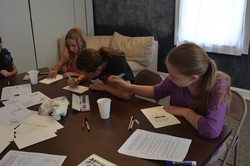 Finally we had fun by reading poems out of my favorite Shel book: Don't Bump the Glump! and Other Fantasies. Students were given materials to draw and paint their own fantasy creatures and asked to write a poem about them in true Shel Silverstein style. The drawings were FABULOUS and the creatures delightful. A few students finished their poetry in class, others need to continue working on them. Student WorkHomework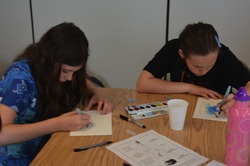 Complete your drawing and poem. Bring your completed work to class next week to share. I would also like to photograph all work for our Mosaic site, as they are truly wonderful pieces of art! The Nature of Compassion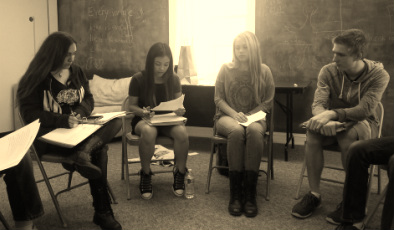 Compassion is defined as a feeling of deep sympathy and sorrow for another who is stricken by misfortune, accompanied by a strong desire to alleviate the suffering. Our discussion in class this week centered around the Tibetan fable "From the Elephant Pit" and the complexities of compassion it evokes. Students read the short arguments they had prepared on the question of whether compassion can/should be shown in all situations. Was the hunter in the story foolish to have shown compassion to a man who turned out to be greedy and untrustworthy? Had his misfortune not turned around in the end, would his compassion have been worth it? When should we show compassion to others and how do we discern when it may not be in our best interest? Or perhaps, as one student explained, we should always show compassion, no matter what the end result. While everyone agreed that the ideal would be to exhibit compassion in all circumstances, there was an acknowledgement and ensuing discussion about the practical barriers that arise in meeting this ideal: fear of danger to ourselves or retribution, ignorance (of those different from ourselves), stereotyping, helplessness (what can I really do?), narcissism and social disconnect, a sense that some individuals may not be as "deserving" of compassion as others. Our time spent on this topic provided the opportunity for students to contemplate how an ethical debate would differ in substance and approach versus the policy debate they engaged in last week. There were many aspects of this topic we did not have time to cover, but I hope students will continue to think through. For example - is compassion a natural instinct or a learned behavior? I encourage all of you to watch this TED video (Nature. Beauty. Gratitude.) by Louie Schwartzberg, a cinematographer and creator of awe-inspiring films. Ask yourselves - what is the connection between gratitude and compassion? Homework - Our Next Debate! Students voted to take on the topic of Gun Control for our next in-class debate, to be held in two weeks (May 19th). I have assigned the students to teams, but will not disclose which side each will argue until the day of the debate. I suggest we narrow our debate topic to: Should civilian possession of hand guns be banned and/or severely restricted? For homework this week everyone should be researching the issues relevant to gun control. A wide array of links and resources on the topic can be found HERE.
Students should:
We will share our individual research in class next week and break into teams to strategize and prepare for the debate. with Michelle Cameron Spring Reading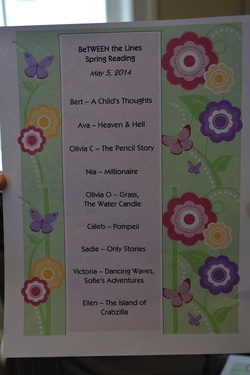 On Monday all of the students shared some of their best work of the semester with fellow classmates and parents. Everyone did a wonderful job, and the stories and poems were enjoyed by all. Below are a few photos taken during the readings. Also, please see a very important message at the end of this post regarding supplies for next week's class! Supplies Needed for Monday!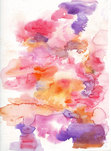 In class next week the students will be doing a poetry unit based on Shel Silverstein's works. Please bring a simple watercolor set (including brush). I will have extras, but not enough for the entire class. Ms. LA with Leigh Ann Yoder Building BridgesThis week we worked as Civil Engineers building bridges. Each team of two students was provided with straws, paper clips, push pins and two feet of masking tape. Their goal was to build a two foot bridge that could support the weight of golf balls. The biggest obstacles were time and materials. We discussed that this is often the case in real life. Engineers are usually given projects that have due dates and must work with very limited resources. The teams all worked well and finished in time, however, all of the bridges sagged. We discussed why they sagged and what could have been done to improve their designs. All students agreed that adding a side support structure would have greatly improved their bridges. Some teams were able to hold up to three golf balls! Terrific work. The First Straw (Not the Last!)Luckily we had enough time to read a short story about the invention of drinking straws. What was so interesting about this story was the fact that drinking straws are generally not considered a necessity. The man that invented the drinking straw (originally made out of paper and hand rolled) only did so because he wanted to improve the quality of his own drinks. Prior to the drinking straw people would drink out of reeds, but that left a yucky taste in your mouth and altered the taste of the drink. Most people thought his drinking straws would be non-profitable, yet he ended up becoming very successful just because people wanted straws like his. The moral of the story is to invent whatever you want, and don't worry about its need or marketability. You never know what simple invention could be the next big fad! I also spent a bit of time going over the final projects with the students. We will continue to discuss and have project updates over the next few weeks. HomeworkFINAL PROJECT - Work! Work! Work!
Stories of Inventions (Optional): Read Chapter 17 Board Games (Optional): Continue to improve your board games for our Engineering Fair with Ed Insel Rocket Assembly I I postponed current events until next week and instead showed the students some videos of past events: NASA/ESA video of the Huygens probe’s descent to the surface of Saturn’s moon Titan; the making and meaning of the Hubble ultra-deep field image; and George Smoot’s presentation of the 3D structure of matter and dark matter in our universe. The class had not seen this information before. I warned them they would be overwhelmed by the sheer size of our universe and by the end they agreed! Then I showed them Steve Jurvetson’s short film on model rocket photography and they started building their model rockets. Each student has an Estes Alpha rocket and a bag to keep their parts together. All of them finished shaping and sanding their fins, and most finished assembling the engine mounts. Students are free to work on their rockets during the week, and we will use next week’s class to finish them. If they do finish their models during the week I have another design I’ll give them in class. I’m hoping they launch their rockets two weeks from today in the field across from the church (spectators welcome), but we’ll have to watch the weather and stay flexible. Homework for Next SessionWe will discuss the current events already prepared by our next team. Decide on the Engineering Project they want to do, prepare a list of milestones with dates, and email it to me as soon as they can. A duplicate set of ideas is at the end of this post. Reminder!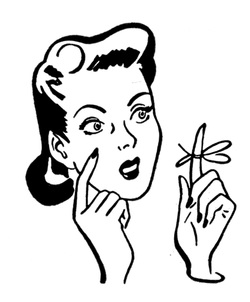 Each student will do an individual project and show their work during the last class of the semester. Their Engineering Journal will show the work they’ve done on the topics we’ve covered. The project must be related to engineering, and some ideas are:
with Rich Piscopo April 14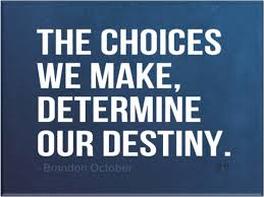 So, our "P4C Productions Theater Troupe" reenacted episode nine of Lisa, with reassigned parts. We had great fun acting the parts! The issues we touched upon were fighting, making choices, Cause and Effect, and resigning ourselves to our "fate" (Free Will and Determinism). The class chose to talk about making choices. (I have reserved much time in the future to investigate the huge philosophical issues of Free Will and Determinism and Cause and Effect.) The facilitator put out the notion that the choices made by our ancestors brought us into existence. If our grandparents never met and did not have offspring, the self we know as "me" would not exist today. And the choices our families and we have made (relatively recently) have brought us to this moment in time and space. If it was decided that one should take ballet lessons rather than P4C during this time period, we would have never met. Every moment is filled with infinite potential. Which potential we actualize creates who we are in the future. After discussing this phenomenon, a student said, "I hate making choices." Then another added, "I think too much." The rest of the class generally agreed with these comments. So that the students did not feel strange or different, the facilitator reassured them that many of his gifted students have the same complaint. He told them that their high intelligence and active imagination allows them to see multiple consequences to any choice. This awareness can be overwhelming, thereby paralyzing them when it comes time to choose one course of action. However, the facilitator went on, the same intelligence that may cause the paralysis may save them from it. By making a "Pro and Con" list and then choosing the decisive consideration, one may choose the course of action with the most probable positive outcome. [This thinking process is discussed at length in the novella, Harry Stottlemeier's Discovery, the program that precedes Lisa. Also, as evidenced by the excellent judgment demonstrated by the students' parents, the facilitator is sure this thinking process is taught at home. However, the facilitator thought it a good time to reinforce the concept in the classroom.] The students agreed with this thinking procedure, and class ended on a positive note. April 28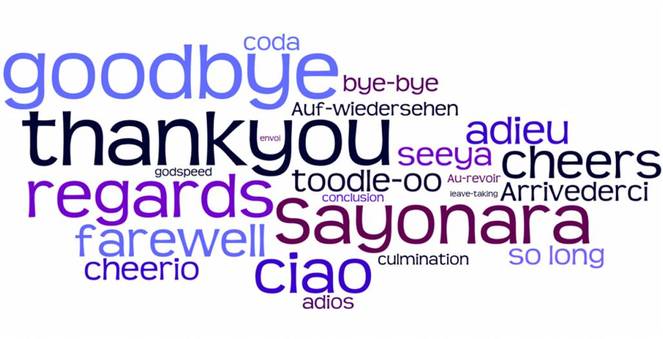 It was with sadness that I announced the need for me to leave our class early this season. I informed the students that I'd be working in a summer arts program with the Developmentally Disabled. Through art, our hope is to "ignite the spark within" (our slogan) those with severe disabilities. I gave a concrete example of how I used philosophy to help me navigate a new situation. Last week, one of the clients I was introduced to was severely challenged. She had cerebral palsy and was confined to a wheel chair. Upon first appearances, she was striking to see. My first, primal, impulse was to recoil. Then I remembered what we frequently spoke about in P4C class: things are often not what they appear to be. Suspend judgment. Be open. And, true to form, once I overcame my initial fear, and got to know this severely challenged woman, I discovered that there was a wonderful, positive person inside. She had hopes and dreams, likes and dislikes, and personality. She was just like you and me, only contained in a different package. Responding to this story, a student said she often wondered how a blind person perceived the world. She wanted to "see" the world from their point of view. All the students responded similarly. Another mentioned the Seeing Eye puppy her family is raising. What a mature skill it is to be sensitive to another's point of view. We then moved on to my planned lesson about the relationship between reason, consistency, and ethical behavior. I asked, "What part does consistency play when you are forming a code by which to guide your life?" I mentioned that in chapter two of Lisa, Harry Stottlemeier said there are rules and procedures for thinking (i.e., logic). He then asked if there are rules and procedures for living. The first student said there are different sets of rules or procedures. For example, the rules and customs established by society may not apply in a survival situation. We then discussed finding a set of values for oneself. I asked if the students have yet to find theirs. All said they have found most of them. The issue of lying arose. I asked if we would betray our dignity even if we told a little lie, say to preserve someone's feelings. The first student said that there was a level that was not quite lying. I played devil's advocate and said there was either lying or telling the truth. A second stepped in and suggested we say whatever does the least harm. He went on to say that the overall value of compassion outweighs the smaller value of telling the truth under all circumstances. As our time was running out, I left the class with these questions, "Who are you? Is who you are dependent on being ethically consistent?" Thank you all for a great year! Looking forward to another great one next year. Stay curious and keep the journey of discovery alive! with Ed Insel Intro to Rocketry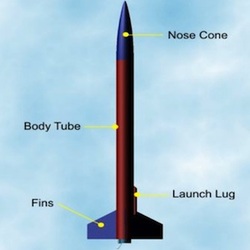 Our next team brought us the current events for the week. We talked about the many engineering fields involved in the South Korean capsized ferry tragedy and got into a good conversation about space exploration. There is a lot of interesting material on our space discoveries they have not seen, so I will make time at the next class to show them some of the amazing work that has been done in astrophysics. This lead us to the start of our model rocket project. We talked about the phases of flight, from launch to recovery, and the importance of aerodynamics. Then the students practiced smoothing and shaping some actual rocket fins. Homework for Next SessionFor next week, the next pair should choose a current event and be prepared to explain 1) the event they chose and 2) the role that science plays in it. Try to decide on the Engineering Project they want to do. I put a duplicate set of ideas at the end of this post. When we next meet, we’ll begin assembling our rockets. Please read the introductory 12-step rocket assembly guide at http://www.instructables.com/id/Building-a-Model-Rocket-Introduction/ - those that do will be much better prepared to do a good job on their rockets. The first page emphasizes the dangers and precautions, but they don’t need to panic – the only real safety issue will be handling the modeling knives properly. The engines and igniters will be safely kept by me until the day we launch! I will provide each student with a rocket and the tools and materials they will need. Students that want to paint or decorate their rockets will need to provide their own primer and paint(s). More on the rocket project in my next update. Reminder!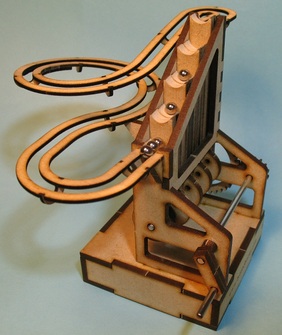 Each student will do an individual project and show their work during the last class of the semester. Their Engineering Journal will show the work they’ve done on the topics we’ve covered. The project must be related to engineering, and some ideas are:
with Kim Rodgers Polishing Projects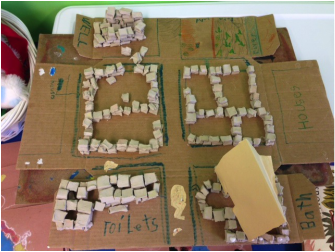 We started off class this week by letting the students choose some activities to continue or complete before we moved on to our study of Ancient China. One student put a roof on the houses we had made for Mohenjo-Daro, along with adding a skeleton in the street as a reminder that several skeletons were found. This lead to the idea that there must have been a mass exodus at one point since there weren’t many skeletons! Two other students worked on their “That’s good. That’s bad.” story from a few weeks ago and presented it to the class. They continue to work on it in their free time. Two other students decided to work with Story Cubes, while the final two students worked with me on a brand new “That’s good. That’s bad.” story. Stories and Art!Ancient China I called the class together to begin Ancient China. We learned about pictograms that were discovered at the earliest site and compared them to the objects or actions that they represent. We made up our own pictograms, with each student finishing a pictogram sentence that they’ll share with the class next week. See you then! |
Categories
All
Archives
May 2016
|

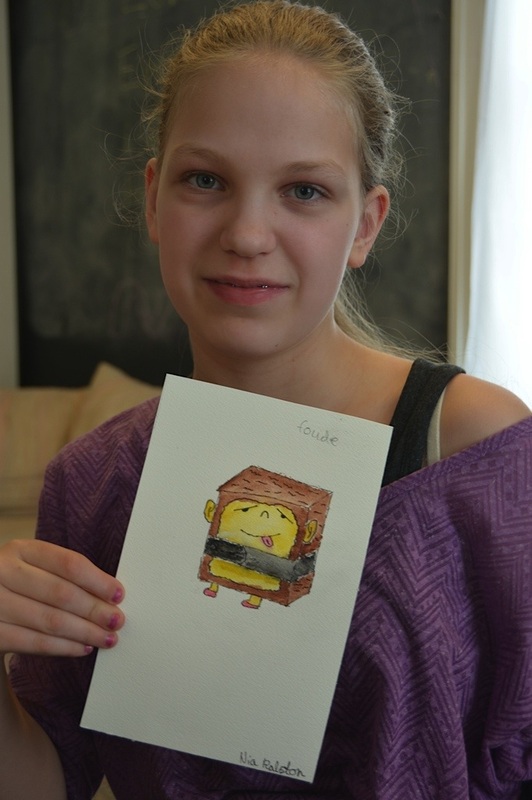
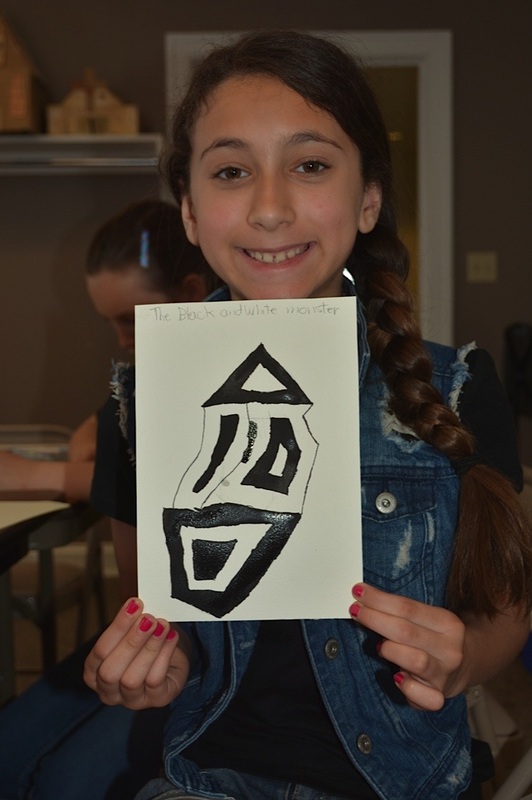
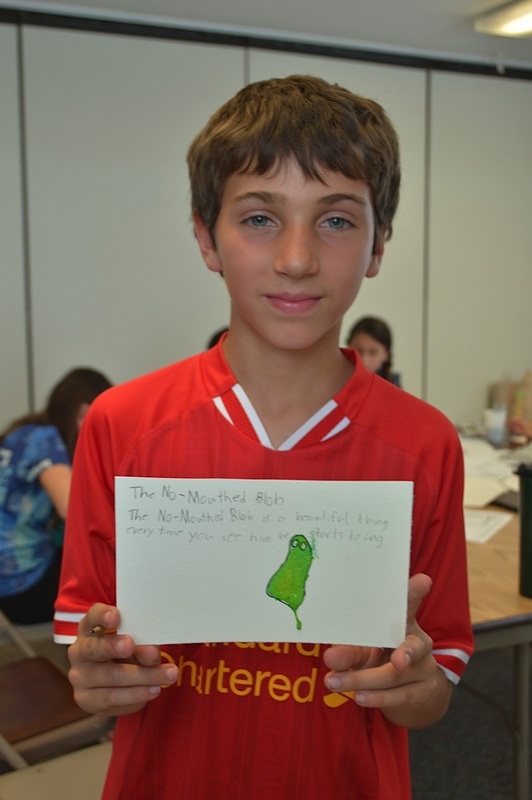
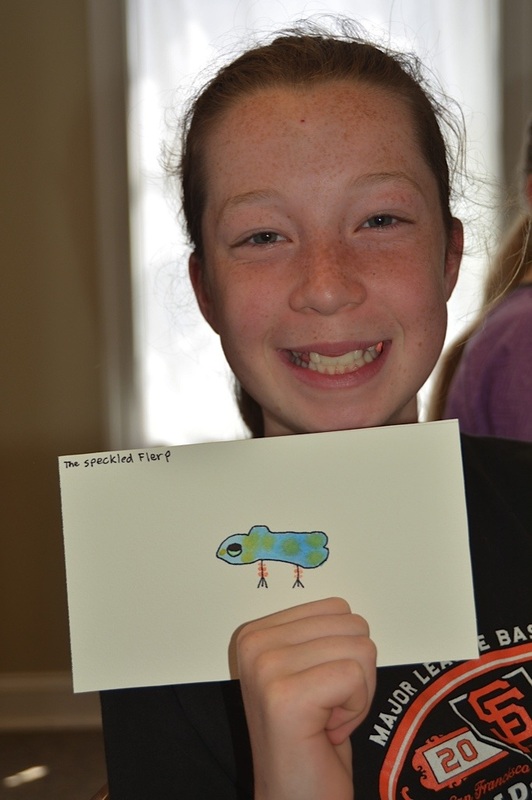
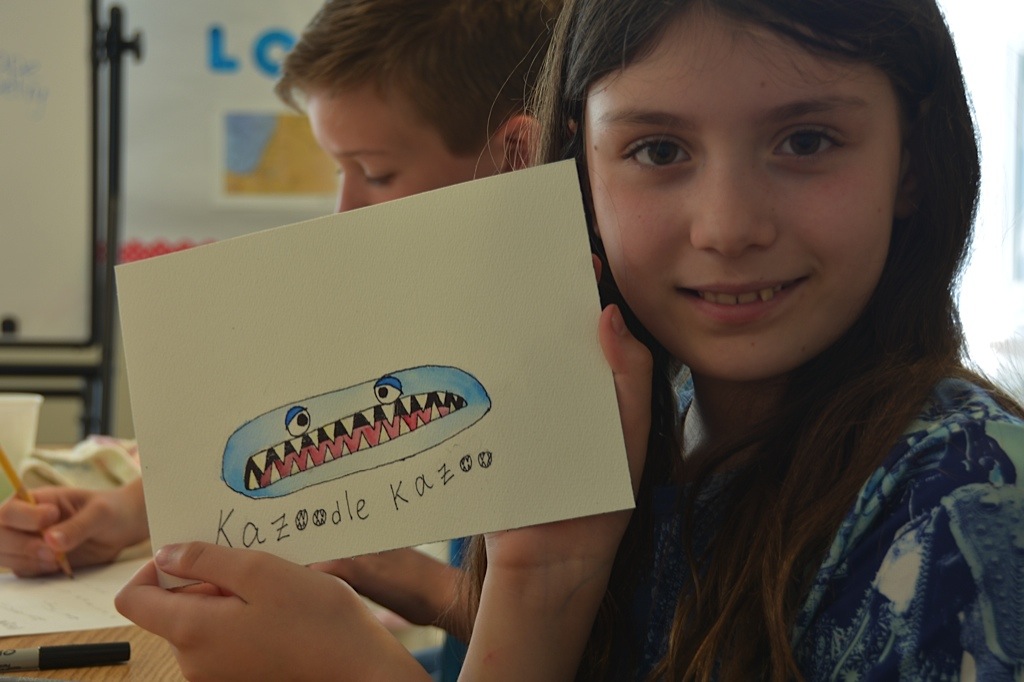
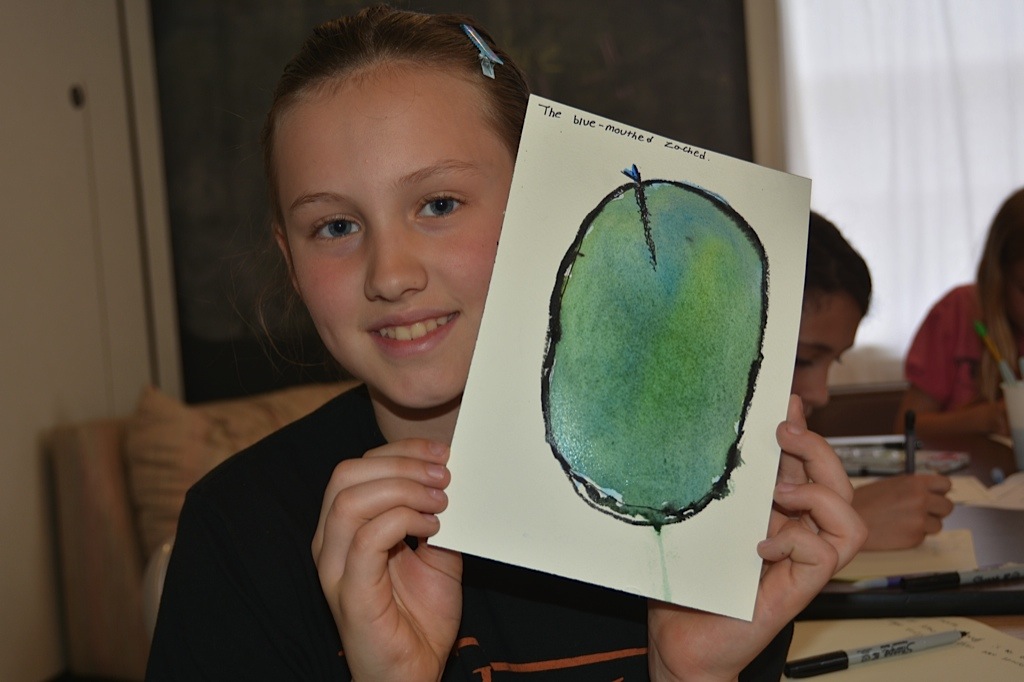
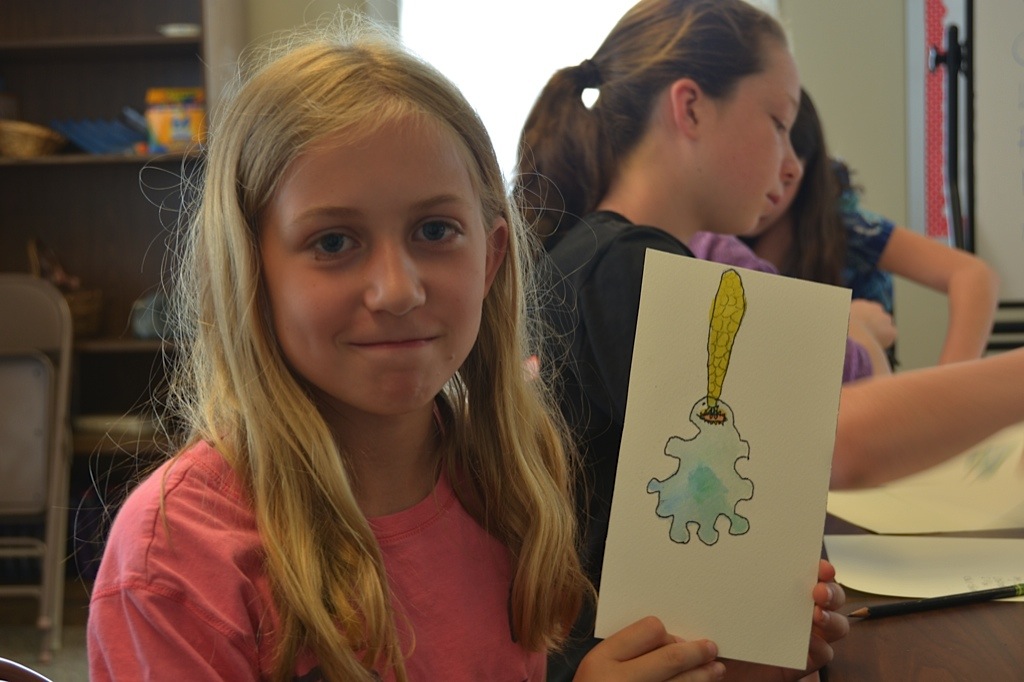
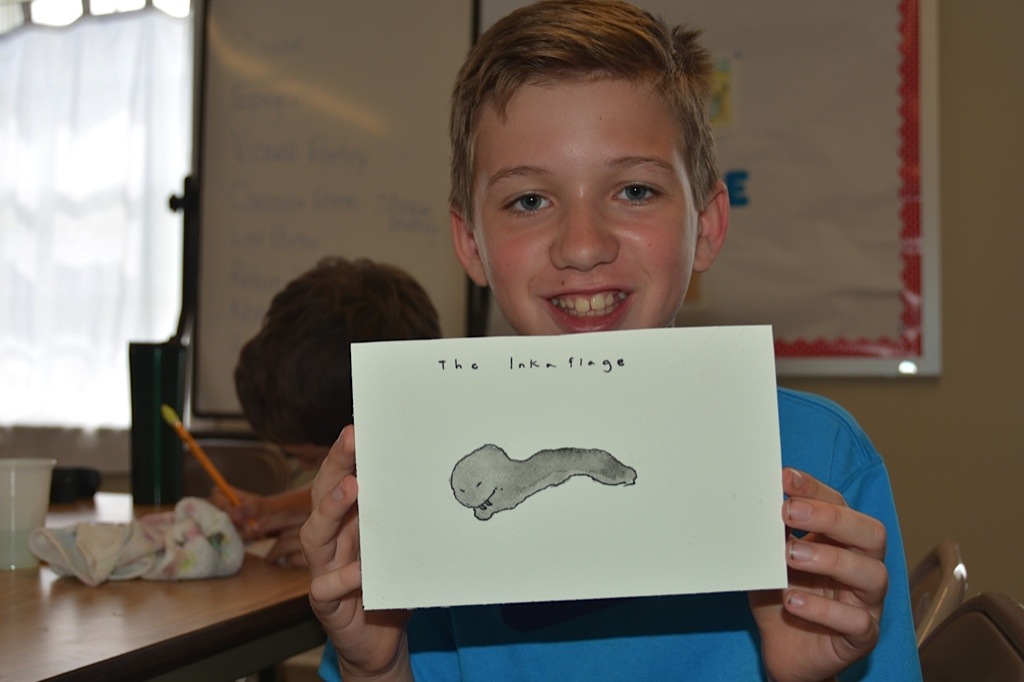
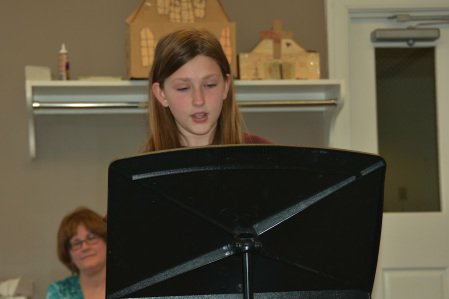
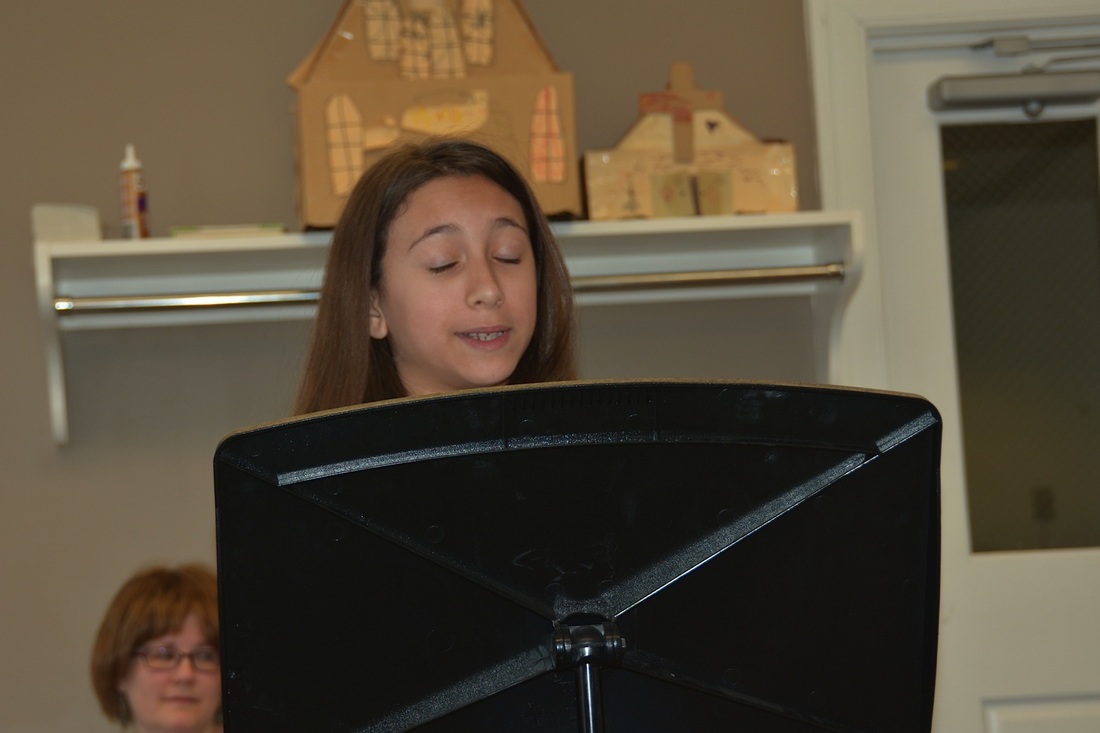
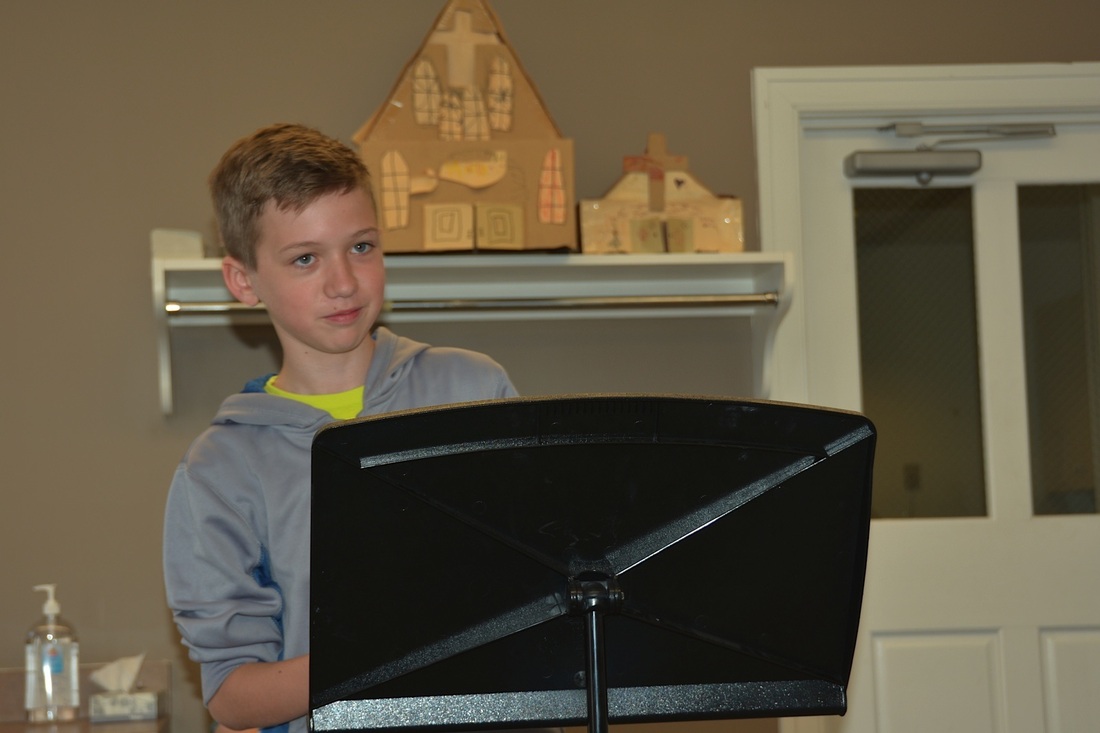
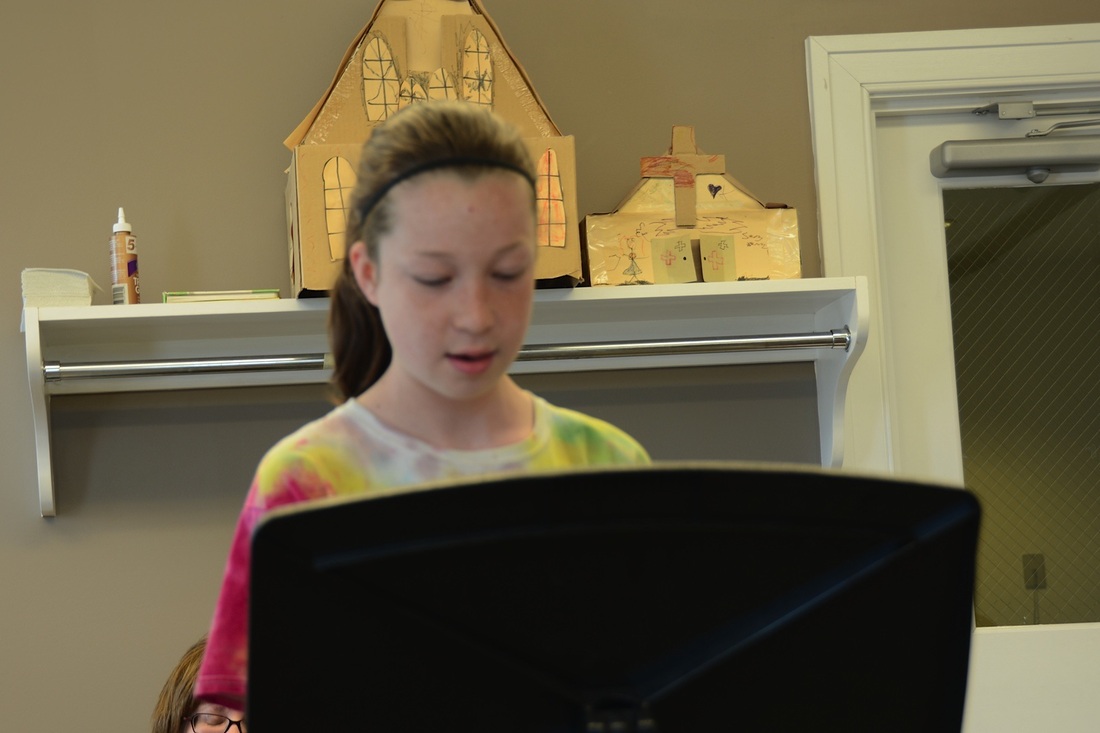
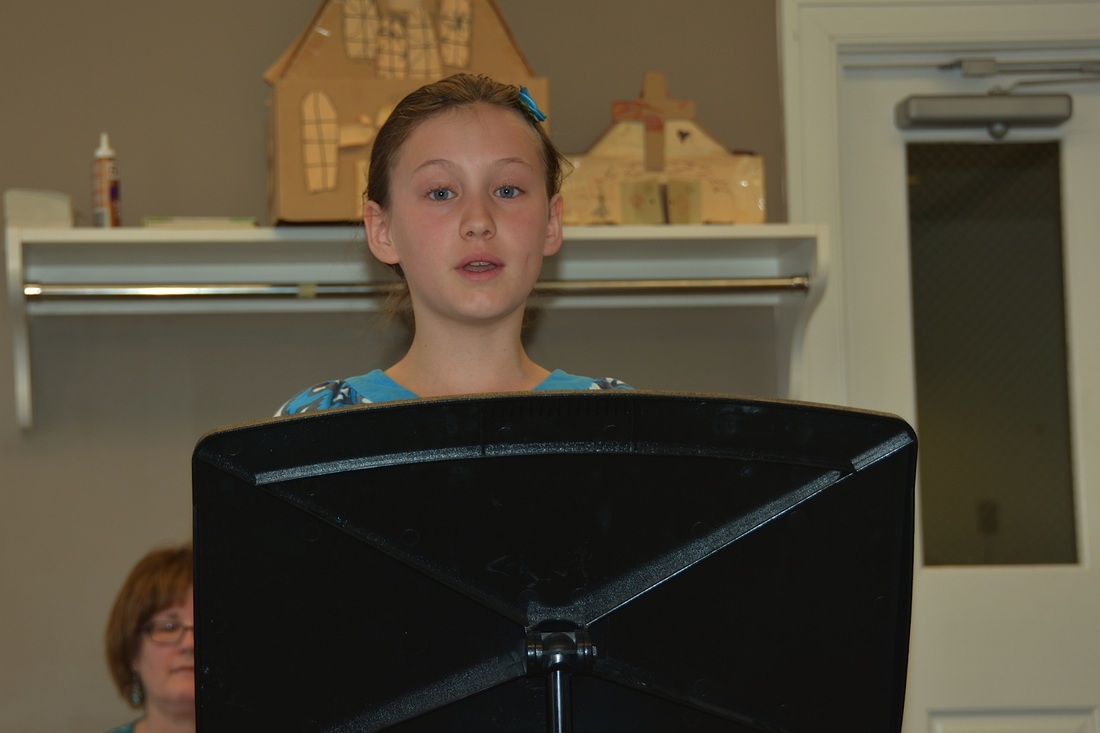
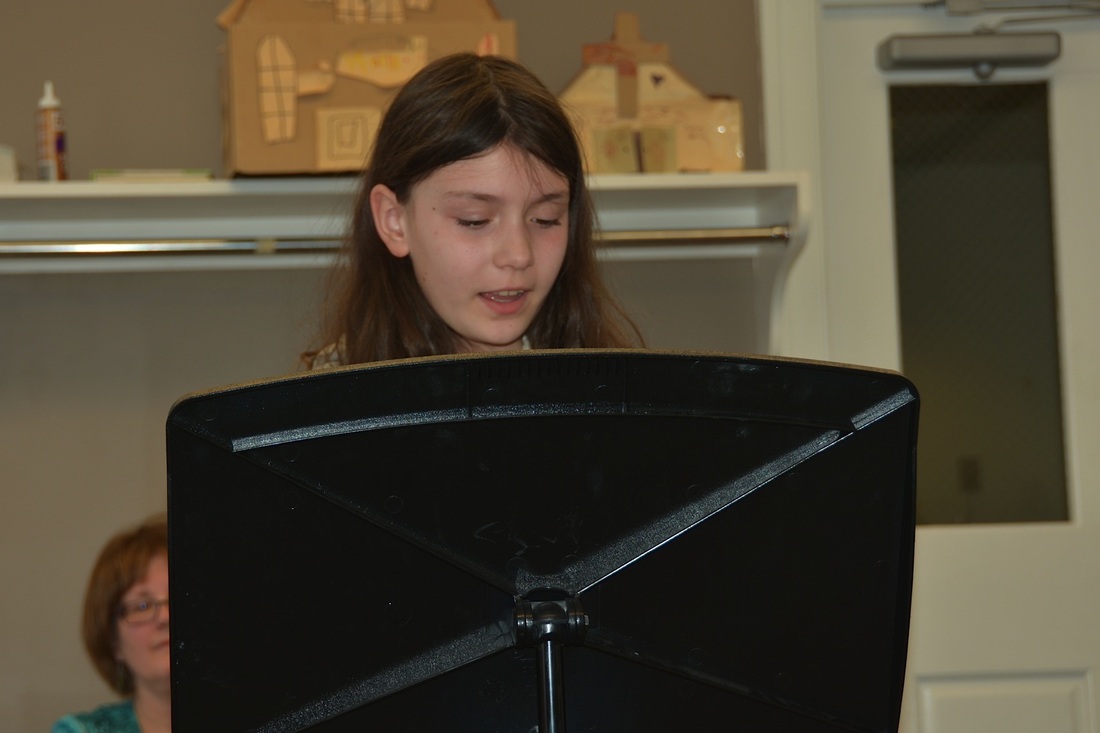
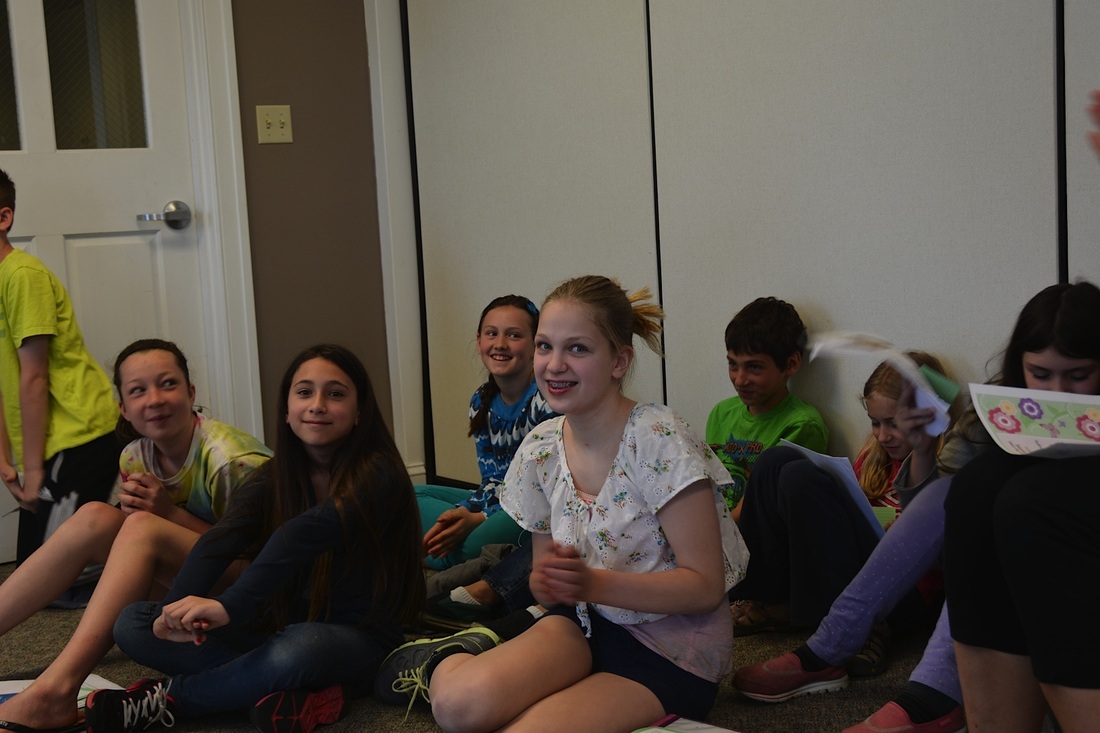
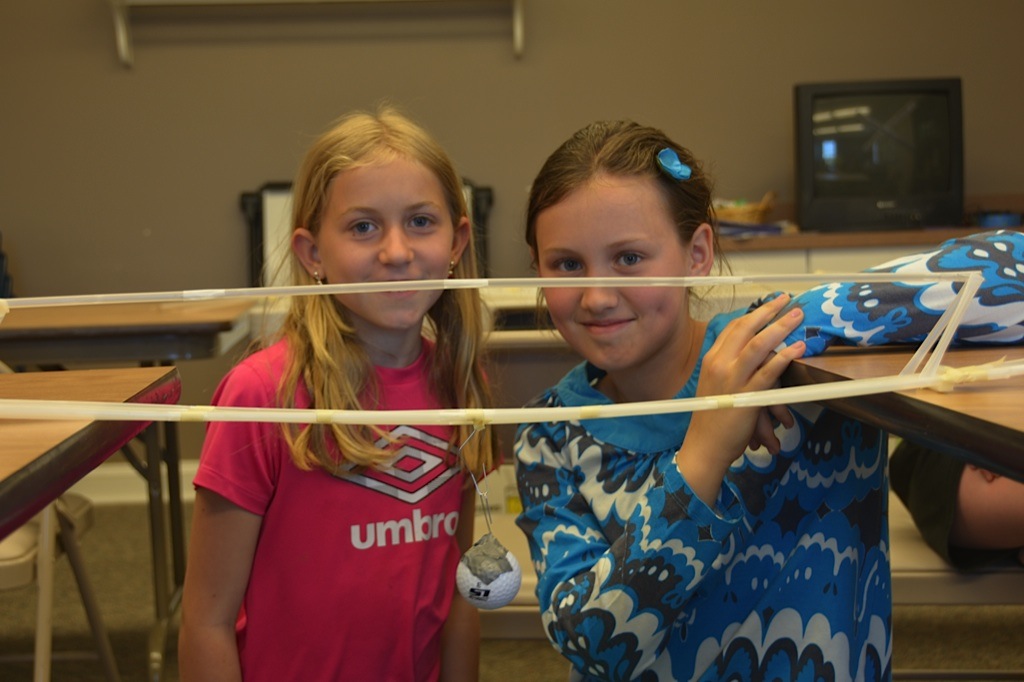
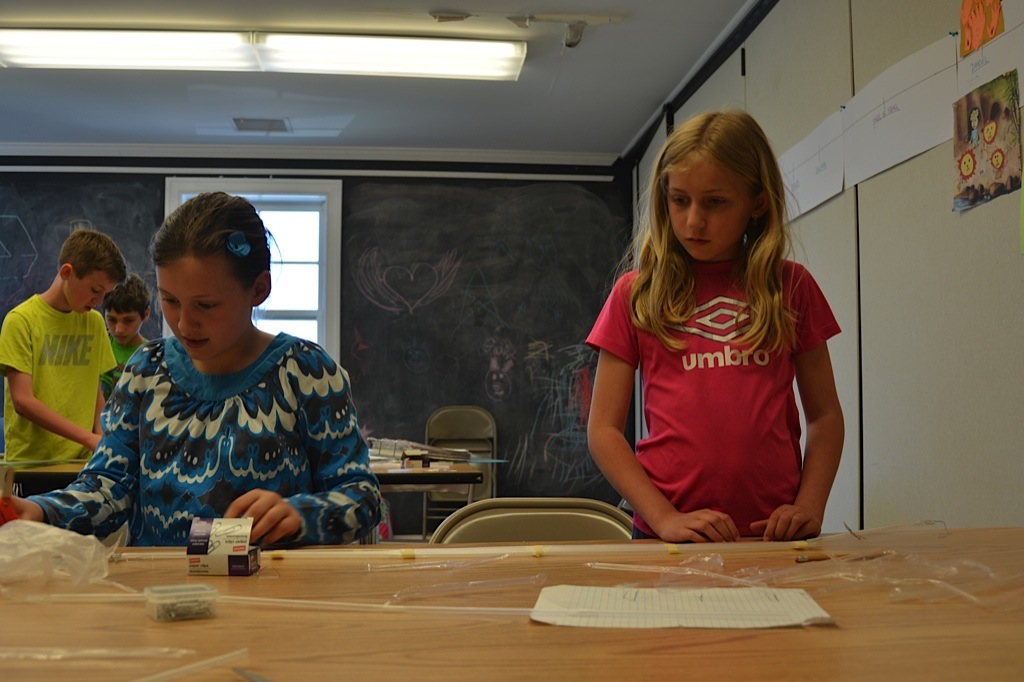
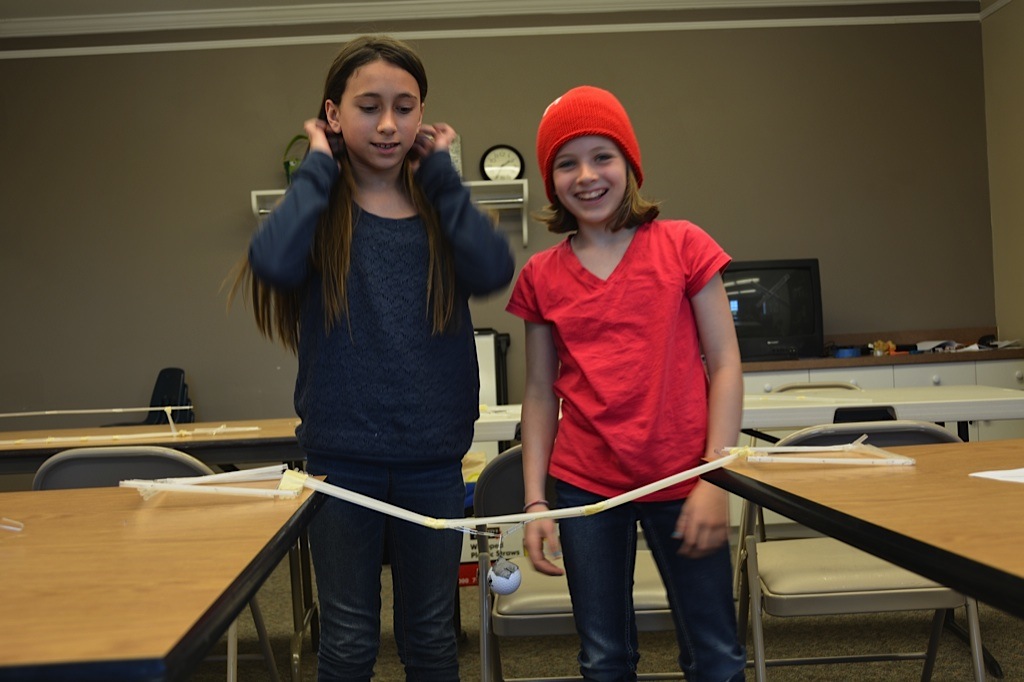
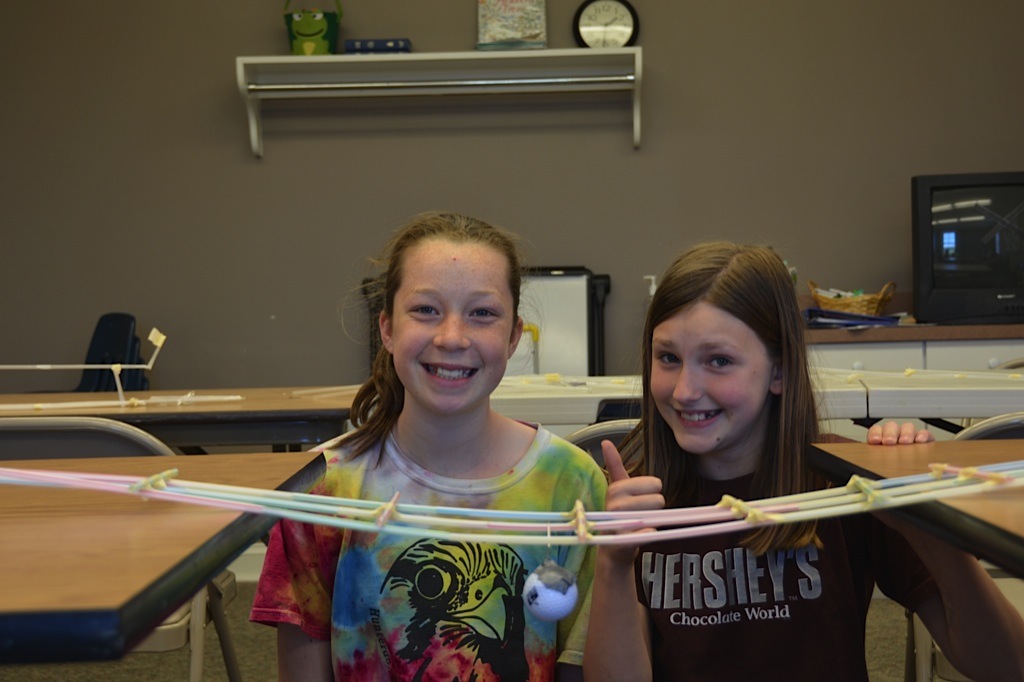
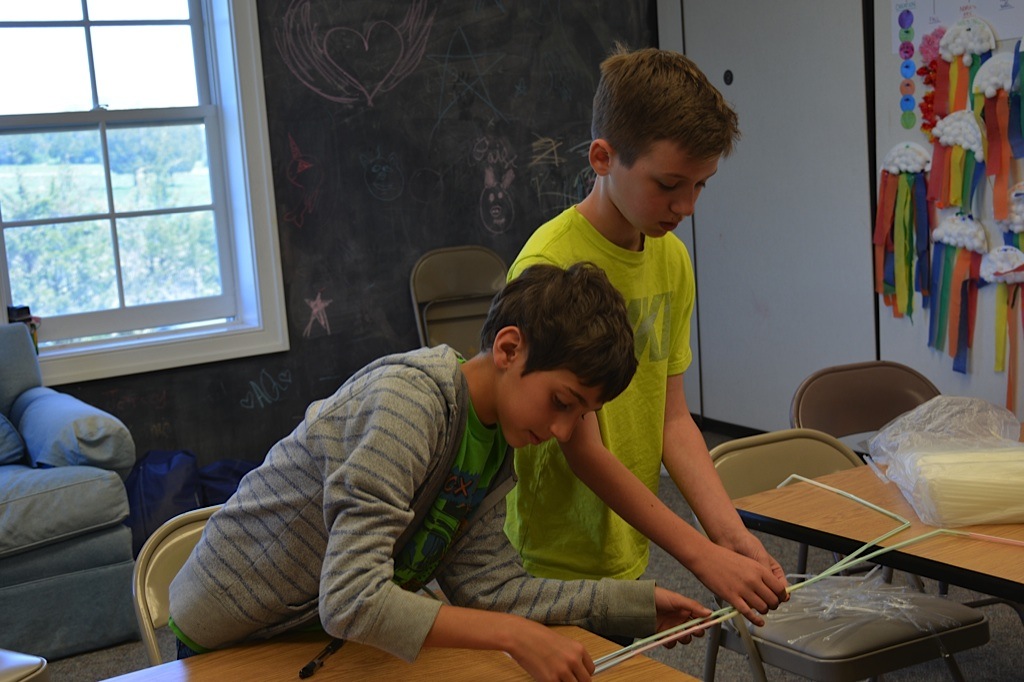


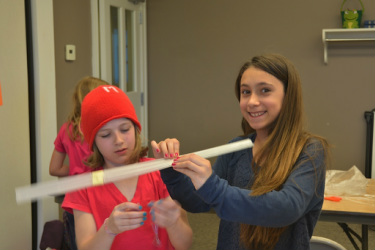
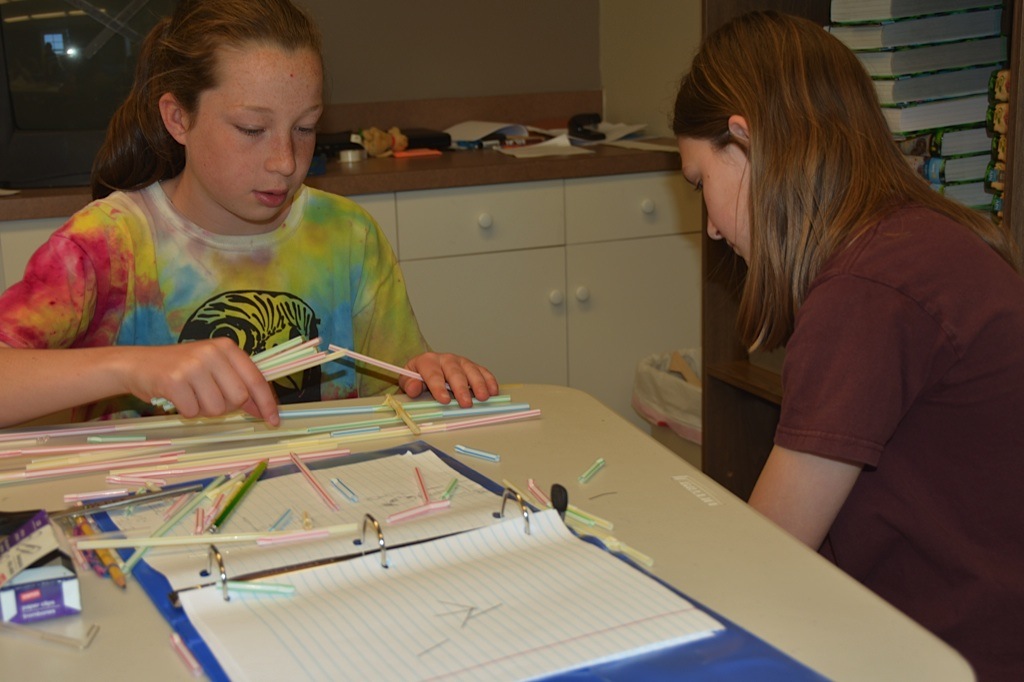
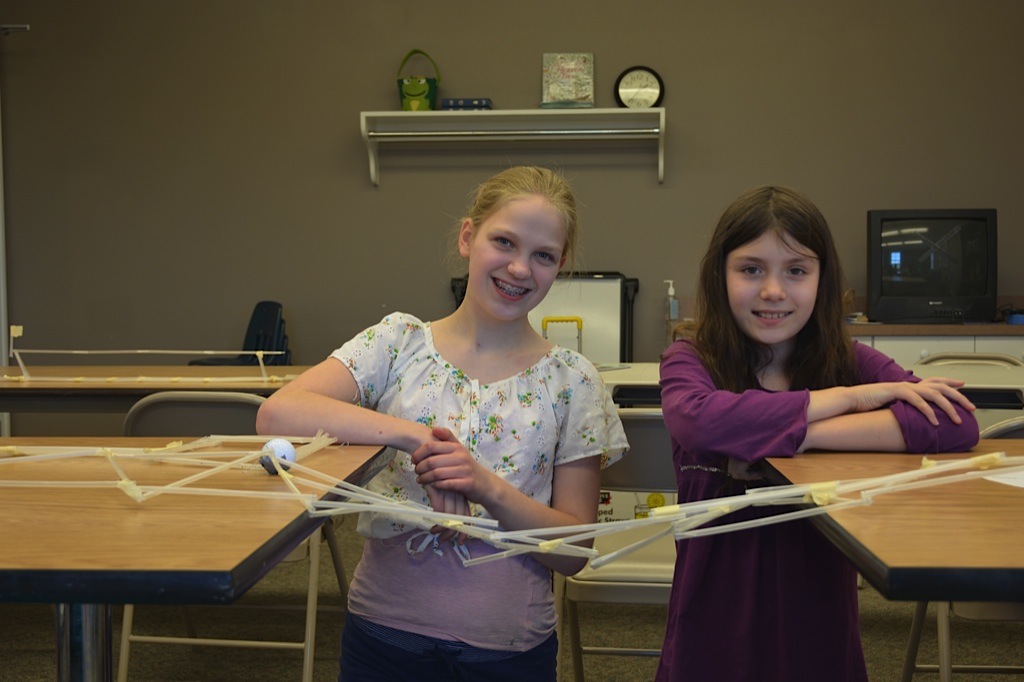
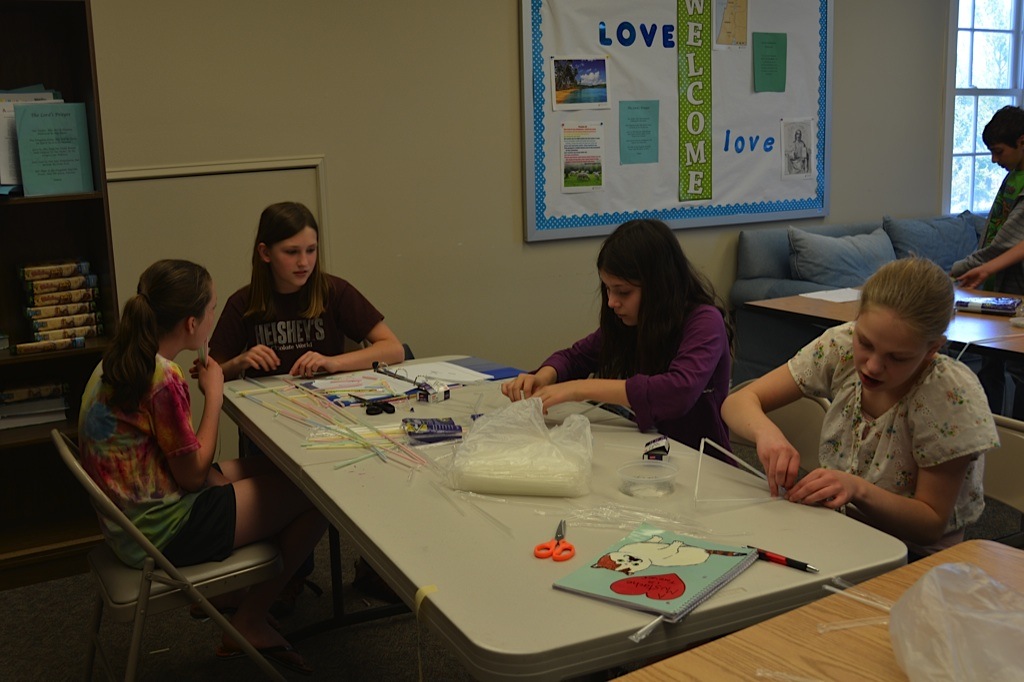
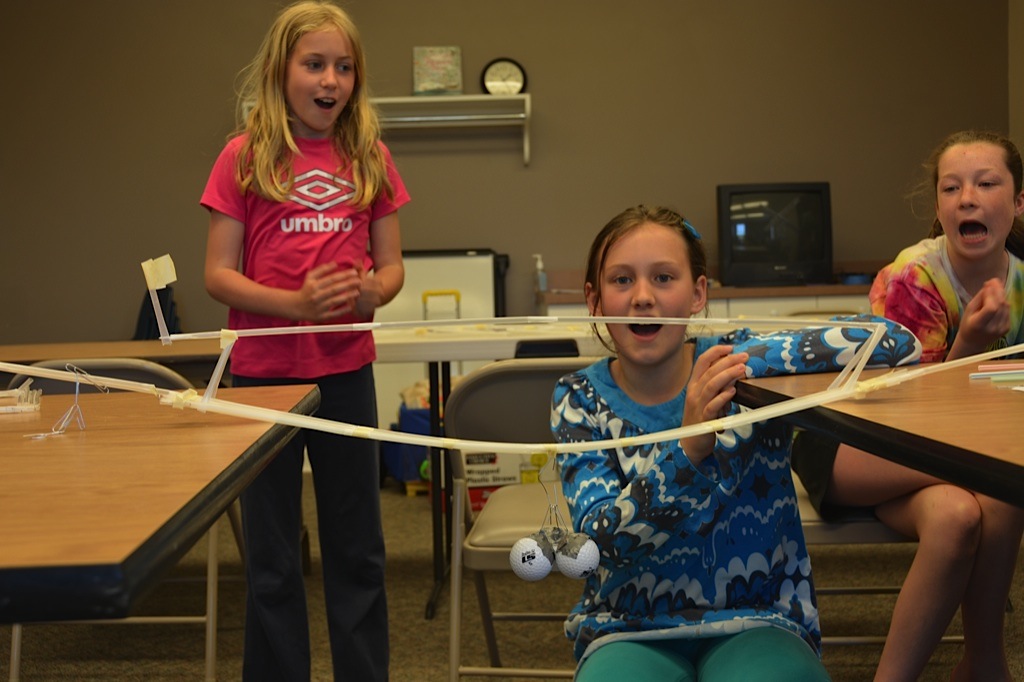
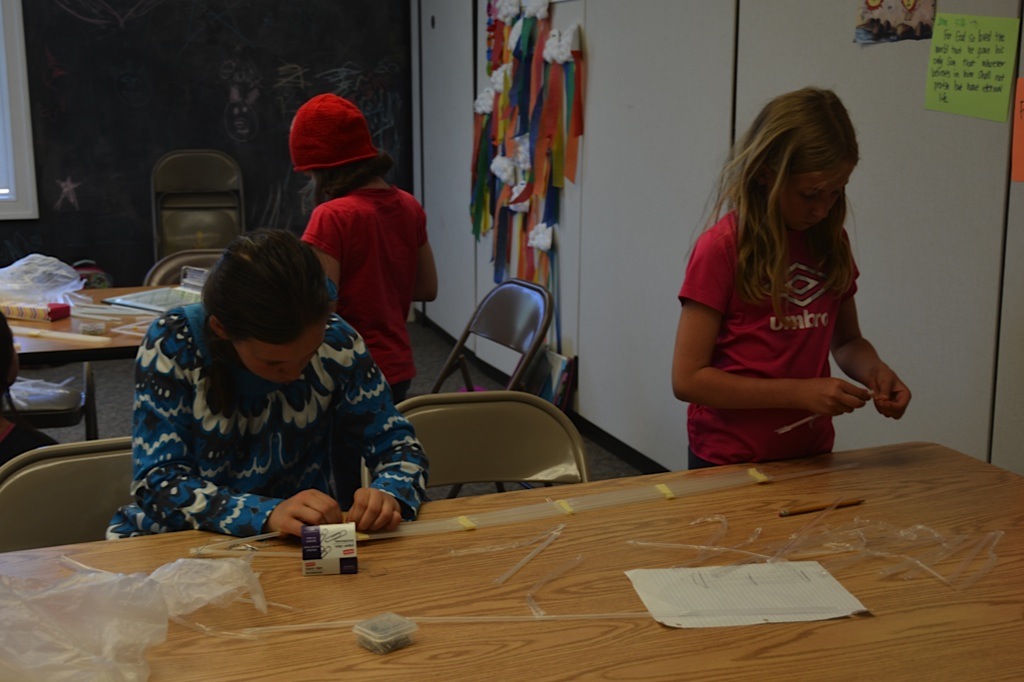
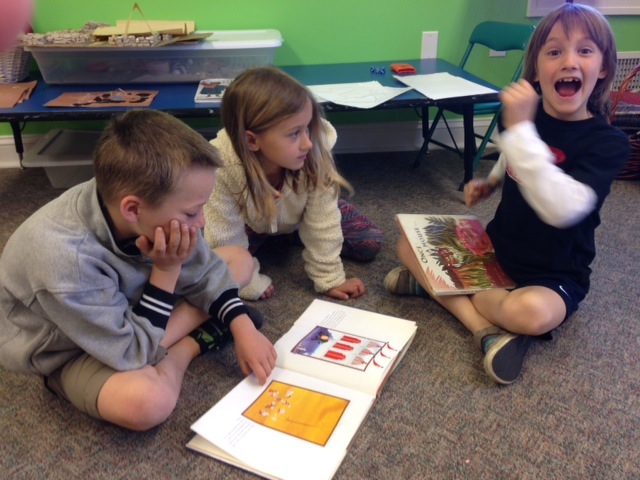
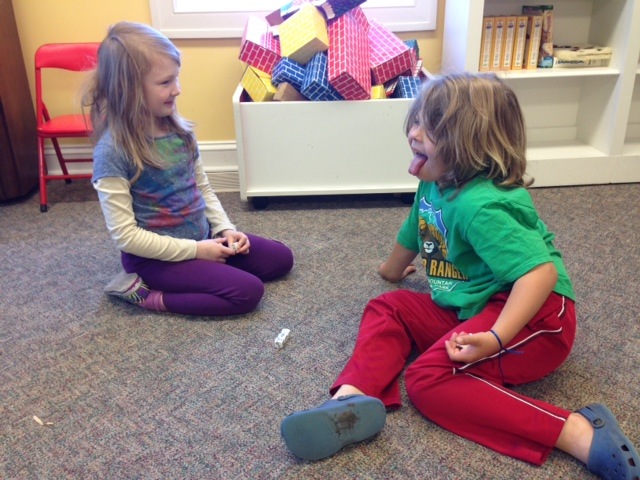
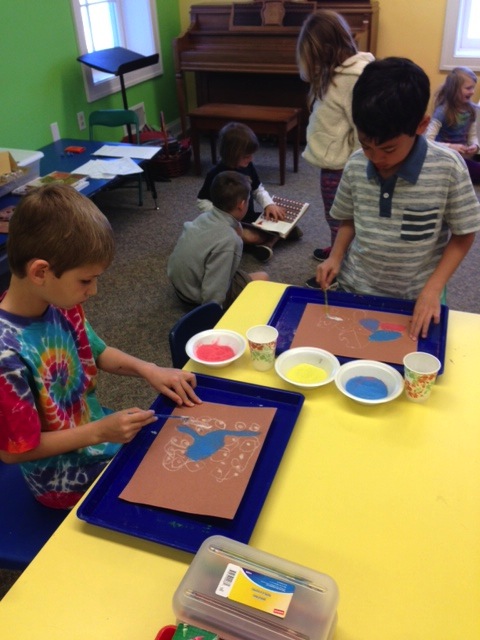
 RSS Feed
RSS Feed